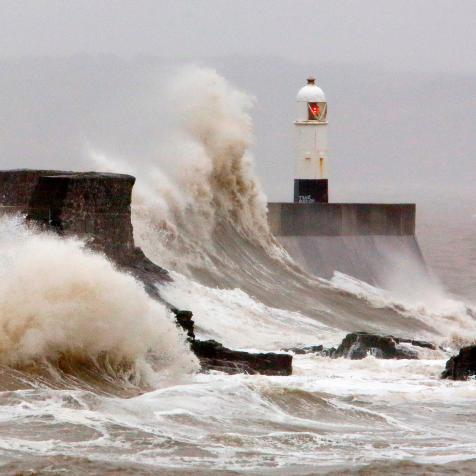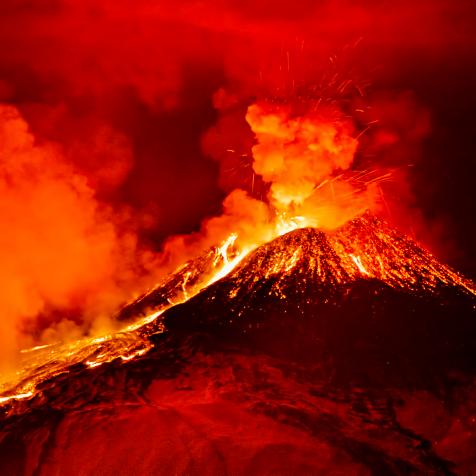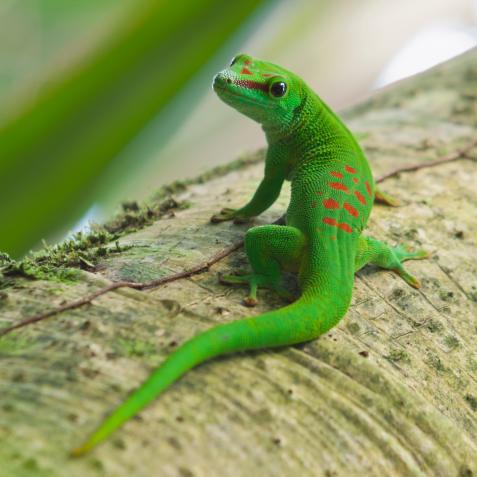
NurPhoto
Frozen Ice Sculptures Could Save a Himalayan Cold Desert
Ladakh, a Himalayan cold desert with stunning mountains and blue waters is no stranger to the impact of a changing climate. But could manmade glaciers save this landscape and its people?
Ladakh is called paradise on earth with its blue skies, vast expanses of towering mountains, and the clearest blue waters. Home to a proud people, the cold desert landscape is dotted with sheep and yaks they rear and strewn with Buddhist prayer flags across the horizon.
But the Himalayan range that Ladakh is nestled in is no stranger to the impact of a changing climate. As summers get hotter, there’s a shift in the timing and precipitation of the glacial melt. And the glaciers themselves are receding, affecting nearly a billion people in the region. Reports suggest that in the last 50 years, almost 14% of glacial ice has been lost. The famous Gangotri glacier that feeds the Ganges, is said to have retreated 3,763ft between the years 1936 and 1996.

NurPhoto
And the people of Ladakh feel this change, especially as they are solely dependent on snow and glacial meltwater. The ground dries up annually post winter, leaving very little water for their consumption, livestock, and crops. Something needed to be done.
Around three decades ago, the region saw it’s first man-made glacier by a local engineer named Chewang Norphel. He chose north-facing valleys, set up small dams, and diverted streams to into them. It worked, but the water melted before the summer months. Taking inspiration from the concept, another local engineer devised a more diverse and visually stunning way to retain water through the driest months in 2013. Sonam Wangchuk was driving over a bridge one May when he noticed the ice that lay in the shade was still frozen. He thought about how to recreate this and ensure that it stayed until the water from natural glaciers began to melt.
Using what he calls “high school science,” he set up a simple system of pipes that allow water to flow downwards from a freshwater source higher up in the mountains. As the volume of water increases and the pressure builds, the water at the bottom is pushed up through a hole at the top of the pipe, high up towards the sky. The water, which is just above freezing temperature within the pipe is met with the Ladhaki cold temperatures (-30 degrees C and sometimes -50) when it emerges. The latent heat of the water is lost, and it freezes as it falls over. With time, as more water gushes out, it ends up creating 30 to 50m high towers of frozen ice, reminiscent of sacred structures called stupas – somewhere between an igloo and a frozen teepee. With beautiful crystalline stalactites on the sides. Sometimes buckthorns and willow tree branches are used to help maintain the shape and allow the water to crystallize around. A 30m tall stupa can hold 15 million liters of water and irrigate a 50-hectare area.
ARTIFICIAL GLACIERS OF LADAKH
— Sonam Wangchuk (@Wangchuk66) June 5, 2019
With global emissions n local air pollution glaciers are melting fast but this Ice Stupa in Shara valley still stands 10 stories tall on #worldenvironmentday .
At this rate it should cross the summer to become world's 1st perennial man-made glacier. pic.twitter.com/rqvK5XvBFm
The secret to its success was its shape. A cone has among the lowest surface area of all 3D shapes, so it receives the fewest possible rays of the sun per the volume of water stored - and ensures the ice takes longer to melt and is retained over months. Wangchuk and his team hoped this would preserve water and slowly replenish the ground through the months of March and April - when water is most needed for people and crops, but unavailable. They were in for a surprise when their trial stupa lasted all the way until late May. And stupas now sometimes last until June. As the water melts, its drips feed the fields, keeping them moist until glacial meltwater finally starts flowing in June.
Wangchuk hopes that hundreds of structures are built across the mountain range, irrigating crops and forests when they need water the most. He wonders why the cold desert can’t now be turned in parts into lush green forest. In 2015, 5,000 trees were planted, irrigated by the stupas, and Wanchuk says that 5,000 could turn into 50,000 or 500,000. The team hopes to re-glaciate what the mountains have lost and find a way to adapt to the changing climate.


















